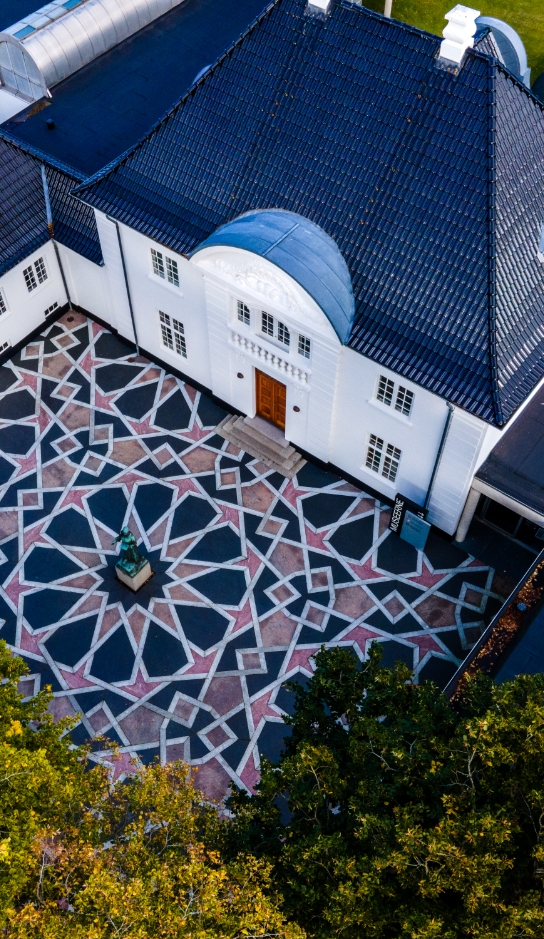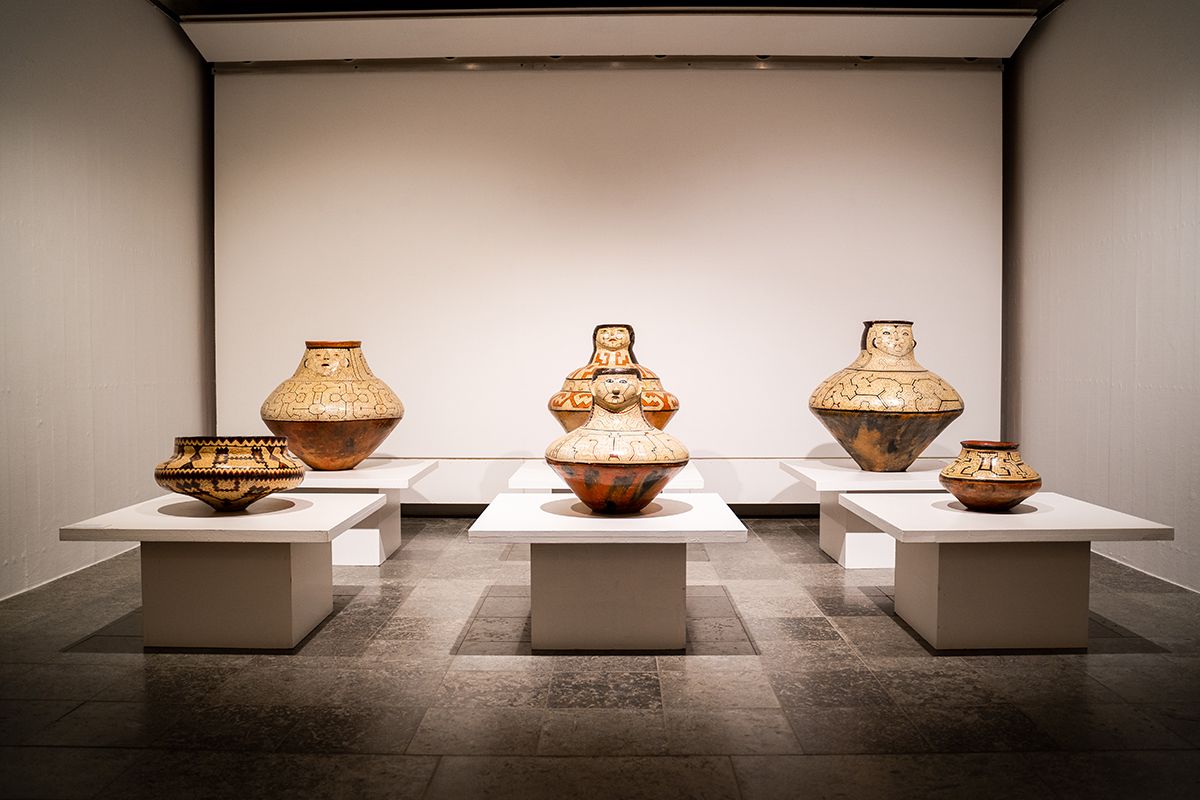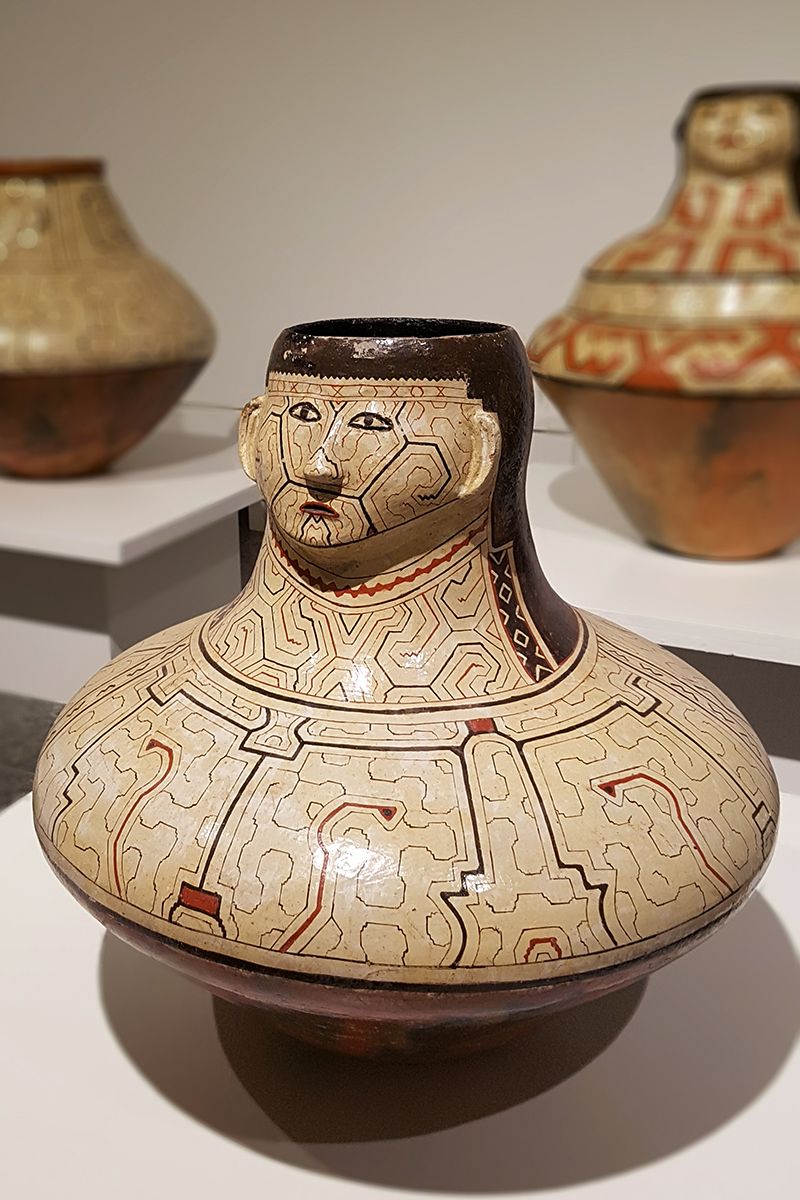Shipibo-Conibo pottery
The Shipibo and Conibo tribes live in the jungle in north-eastern Peru along the Ucayali River – a major tributary to the Amazon River – and consist of some 30,000 to 50,000 individuals. They live either in small villages of between 100 and 300 inhabitants or in the two larger towns Pucallpa and Yarina Cocha. These tribes are known for the unique and complex geometric patterns with which they decorate their ceramic pots and other tools and kitchen utensils.
The patterned pots have been known since ad 800 and form a distinctive cultural feature separating the two tribes from other Indian tribes in the lowlands of north-eastern Peru. Ceramic art is a significant element of tribal identity to the extent that its origin has been placed into a religious context in a legend where the god teaches the first human beings to make pottery.
The collection which, besides pottery, consists of textiles and tools is a donation from Ms Mette Kvist Jørgensen. With an MSc in anthropology and ethnography, she has travelled extensively among Indian tribes in the rainforests of Peru and Panama. The collection was donated to Holstebro Kunstmuseum in 1985.
##>p>
Female ceramicists - creating the pottery
The pots are hand-modelled using the coiling technique. After that, they are decorated with slip using either a white or red background colour and then burnished before being finally painted with the characteristic white or black geometric patterns. After being fired in a bonfire, the pots are then treated with resin that serves the double purpose of sealing them as well as accentuating the patterns. The pots are produced by the women in the village.
The patterns have evolved over time and they spring from a dynamic tradition that is very much alive: each village has its own patterns and each individual woman her own style, which she passes on to her daughters. It is important though, that every pattern is unique.
Different types os pots
here are various types of pots. The largest one is known as Chomo. It is a large pot with a narrowing neck. This pot, which holds between 25 and 50 litres, is normally used for brewing beer. The Shipibo women also make Quëncha and Quënpo bowls – eating and drinking bowls for everyday household use.
Finally, the Shipibo-Conibo Indians make a type of pot – Joni – shaped like the Chomo pot, but with a neck shaped like a face. This type of pot is inspired by the ancestral urns and is mainly made for the tourist and art market.
Mønstre på tværs af medier og som kropsudsmykning
The Shipibo and Conibo tribes do not only apply the patterns to their pottery. Textiles, pearl jewellery, and woodcarvings, too, are decorated with these patterns, and they are also used in traditional tribal facial painting and body decoration.
The patterns have evolved over time and they spring from a dynamic tradition that is very much alive: each village has its own patterns and each individual woman her own style, which she passes on to her daughters. It is important though, that every pattern is unique.



